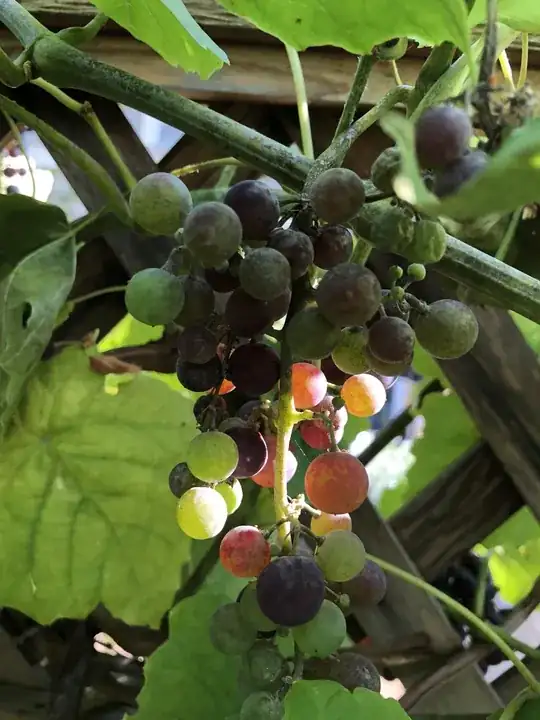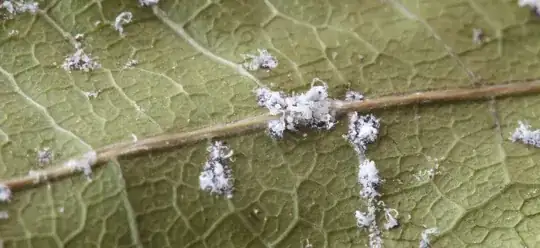I have grown the variety Fredonia which showed this exact mildew. It is powdery mildew most likely. Ontario Grape IPM has a great page on this problem, including a nice pair of images comparing powdery with downy mildew. The timing of the question coincides exactly with when this problem appears in the northern hemisphere, as we go into cooler overnight temperatures with the onset of the fall. The infection starts early in the season but is often not very evident until the berries start to mature. The seriousness of the fungus rises and falls with the varying daily changes in temperature, humidity and wind; it is exacerbated by poor air circulation so keep the vine canopy open with judicious pruning.
For spray solutions not involving organic fungicides read up on hydrogen peroxide and baking soda plus soap in a grape cultivation context which may help.

 Edit, the leaves are not really affected yet, just the stocks.
Edit, the leaves are not really affected yet, just the stocks.